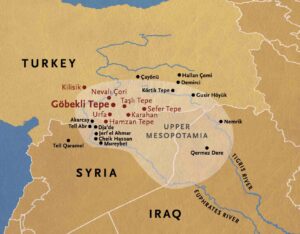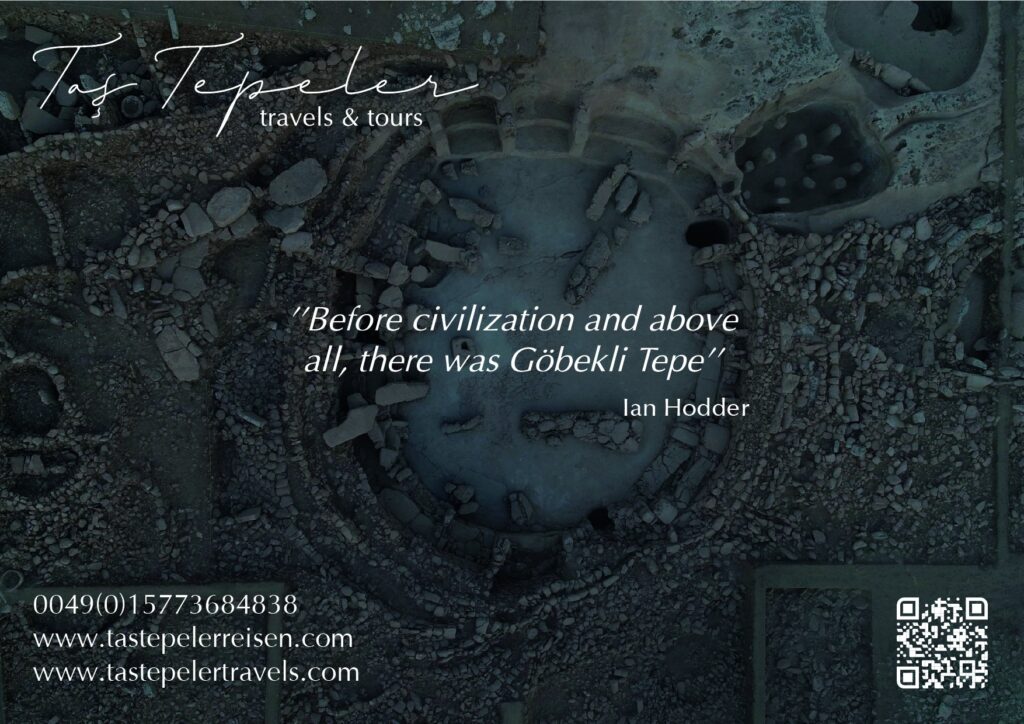CULT AS A DRIVING FORCE OF HUMAN HISTORY: A VIEW FROM GÖBEKLI TEPE
Everyone knows his or her place and assignment; soon the air is filled with the sound of pickaxes and of chanting and laughing. Soil is shifted, rocks are moved. Basket after basket of debris is brought out of the trenches.
What has been brought to light here would have been thought of as impossible by archaeologists just 20 years ago. Four-meter-high monolithic limestone pillars—in a distinct shape resembling the letter T—are arranged
in 10- to 30-meter-wide circles around sets of two, even larger, central pillars. The pillars are richly decorated. Many of them show animals: jumping foxes, snarling predators, bulls with heads lowered to attack. Others, especially the central pillars, have depictions of arms and hands, showing that the pillars are themselves abstract images of human beings.
What makes this site, Göbekli Tepe, so special is its early date. The structures described here belong to the 10th and early 9th millennia BCE, the so-called Pre-Pottery Neolithic (PPN), a period before the development
of pottery when subsistence was still based on hunting and gathering and stone was the material of choice for tools. In this period, a development started that lies at
the foundations of our modern world: a process labeled “Neolithization”—the gradual transition from hunt- ing and gathering to food production, from small-scale highly mobile groups to large-scale permanently sedentary communities. Plants and animals became domesticated, the landscapes were altered to allow settlement and agriculture, and social inequalities developed.



